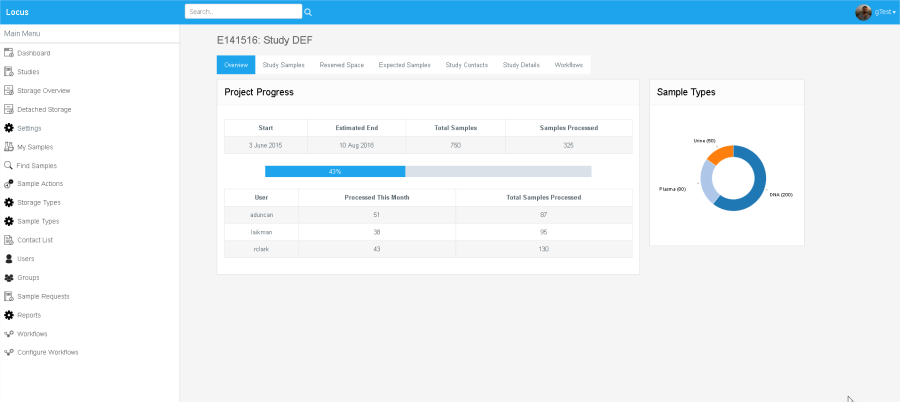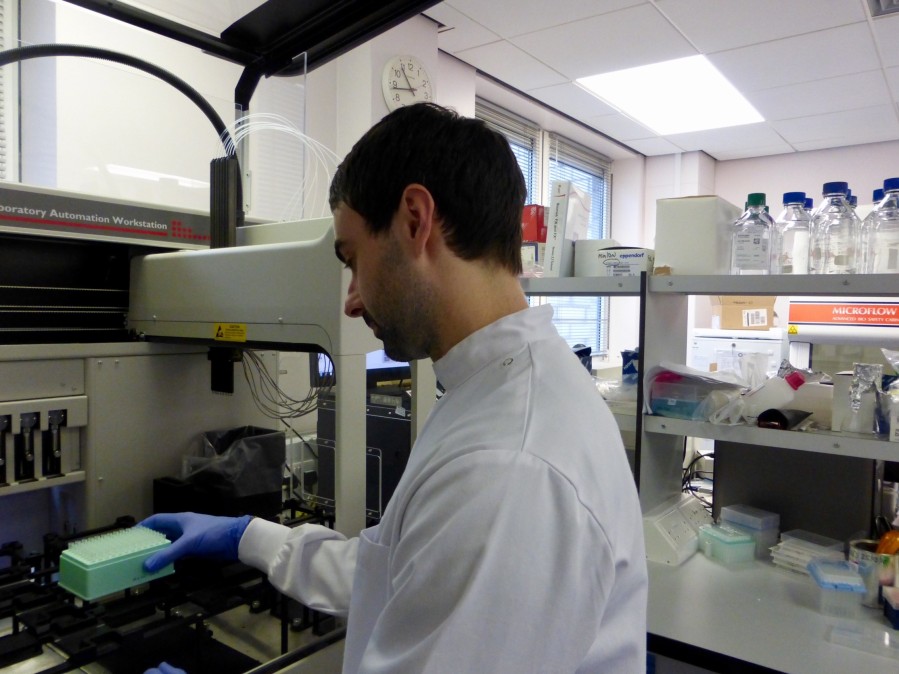Laboratories around the world depend on Laboratory Information Management Systems (LIMS) to manage and track their samples; the Genetics Core is no different. We have over 500,000 aliquots in our freezers, so there is no way that we could make do with spreadsheets or simple database systems. It surprises me how many labs still use this approach!
 Locus LIMS screen shot
Locus LIMS screen shot
The requirement to track information about samples, such as properties, location, activities and status, is not new. The first generation of LIMS was introduced in 1982. We have not had our current system as long as that, but after a number of years, it’s now creaking at the seams, and I must admit, over the years, there hasn’t been a great deal of buy-in from the users. I think they see it as a hindrance rather than a help. They do have some valid points, our current system is a packaged LIMS, and it is not flexible at all, if we want additional functionality, we have to pay for it. It is also very difficult to produce useful reports, and do not get me started on the audit trail!
The thought of implementing another LIMS is slightly daunting, but I am determined that we learn from our previous experience. There are a lot of LIMS vendors out there, and for our first LIMS implementation we selected the LIMS that we thought was most suited to our lab and crucially, we bought the one that we could afford, and did our best to make it work. This time round we are taking another, perhaps controversial approach. We have taken the decision to have our new system built in house by our wonderful IT team.
Now, I am well aware of the issues that surround opting for an in-house home grown LIMS, however I think that this system will offer the best of both worlds. The ultimate aim here is that our “home grown” LIMS will become a packaged LIMS that other labs can purchase.
Our new system, Locus, is a web-based system for tracking samples and sample data. Dedicated developers, who are members of the Edinburgh Clinical Research Facilities software development team, are designing the system for us. They have already produced CRFManager, a web-based resource management system primarily used for the administration of clinical research studies and other day-to-day aspects of facility management. Unlike run of mill in-house systems, Locus will be properly tested, documented and validated, and crucially it will be supported the software development team, even if the person who created the system leaves.
Locus is being designed to exactly replicate the processes that we currently follow in the lab, in addition it is being designed to be flexible, because as scientists we know that processes and technologies can and do change and now with Locus, we will have a LIMS that is flexible enough to handle that.
We are also trying to make sure it is delivered in an agile way, for those of you not aware of this term, which until recently included me, agile is a time boxed, iterative approach to software delivery that builds software incrementally from the start of the project, instead of trying to deliver it all at once near the end.
I will admit that we are at a relatively early stage with this project, but so far, the reaction of the users has been positive. The sample receipt and allocation of storage functionality is already in place, and we are on to the somewhat trickier task of designing the workflows.
Our lead developer has been down to the lab on numerous occasions to go through the workflows with us, this will give him added insight that you can’t get from a list of requirements! It’s extremely handy that the IT team are just upstairs.
 Our lead developer learning about life in the lab
Our lead developer learning about life in the lab
A LIMS project requires dedication from the entire team to make it a success, not just the developers, but the users as well. I am hoping that by including the users at an early stage of the process they will feel that they have more invested the system and feel that they have some ownership. They have also been able to provide useful feedback about usability. To me, it makes sense to pay attention to the usability and user experience of a LIMS, and by involving the users at early stage, I think we are doing just that.
Watch this space for more updates as we make our way through the implementation, I am confident that by the end of the LIMS project we will have a system that exactly fits our needs, but will also be flexible enough to be used by other labs. I am hoping that part of its appeal will be the knowledge that it has been designed in collaboration with the Genetics Core.
Angie Fawkes is Deputy Lab Manager of the Genetics Core and has a particular interest in NGS and new technologies. She loves travel, skiing and Italy. Angie can be contacted on @Angie_Fawkes.

One thought on “Managing samples & their storage with Locus Sample Management”